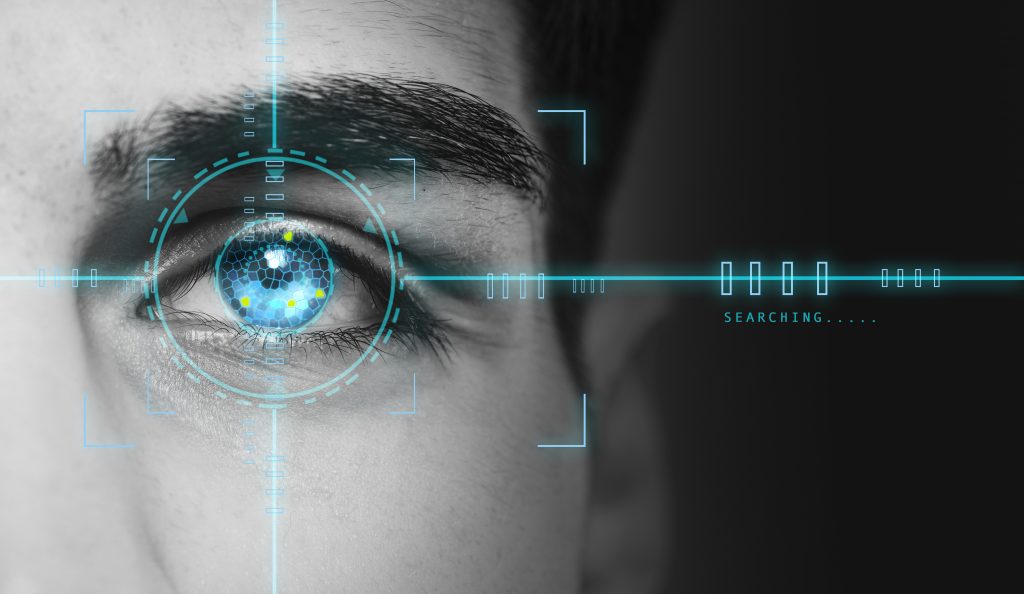Biometric ID checks were developed to verify individuals based on who they are. They make use of statistical, mathematical, imaging and computing techniques to determine patterns within an individual. These patterns are captured using images or scans and are put through software that creates a biometric template, which is unique to an individual.
Rather than relying on tokens or something a person needs to memorize, the characteristics inherent to an individual are used for identity verification. These characteristics create patterns that uniquely identify individuals based on their intrinsic physical or behavioral traits. Some characteristics are used for identification more often than others, with varying degrees of effectiveness.
Fingerprint Scanning

Fingerprint scanning is one of the most popular biometric technologies and was popularized by Apple with the iPhone 5S. Apple conveniently incorporated the technology to the home button of iPhones. Since then, most mobile phones have adopted the technology. It has been readily accepted by users since it does not require them to learn how to use any new technology. It is an easy biometric to use.
As the popularity of the technology spread among mobile phone manufacturers, companies started incorporating this technology into their user verification procedures. For example, American Express has users sign in to their mobile accounts with their fingerprint, bypassing traditional passwords. Why have they done this? Because biometric authentication is more secure than other forms of authentication. [Link to Forbes]
Scanning fingerprints is a highly accurate form of biometric identity verification. Each person on earth has a distinct fingerprint; even twins have different fingerprints than one another. During fingerprint scanning, a mathematical representation of a fingerprint is created and stored for comparison purposes. The US National Institute of Standards and Technology (NIST) claims that the technology is 99% accurate. This means that fingerprint scanning will likely remain one of the most common biometric techniques used for many more years.
Face Recognition

Apple has pivoted the biometric landscape by switching from fingerprint technology to face recognition technology in the iPhone X. They claim that face recognition technology offers users more security, leading to the switch. One of the main reasons for the switch is that the technology relies more on software than it does on hardware. This shift has led face recognition to gain popularity and become another common form of biometric identification.
Face recognition is a non-intrusive biometric ID check. It takes unique identifiers in a person’s face and uses them to match his or her identity. This technology can be thwarted though. Twins with the same facial features can overcome the barriers of this technology. Nevertheless, the technology is 98.5% accurate at identifying faces compared to the 97% accuracy achieved by humans. It is likely this technology will continue to gain popularity in the years to come.
Iris Scanning

Samsung popularized iris scanning technology as a secure method to unlock their smartphones. Iris scanning relies on authenticating the unique patterns in your iris. It takes infrared video images of one or both irises for identification. This makes it a good identification method because it relies on hardware already available within current smartphones.
Iris scanning is an extremely secure form of identification. Humans all have different iris patterns, and these even vary among twins. This makes it a highly secure form of authentication that is difficult for others to bypass. The NIST tested the technology and found that it is between 90 and 99% accurate, depending on the software used to perform the iris scan. This means it is unlikely that iris scanning will overtake face recognition or fingerprint scanning in commercial use at this time. Accuracy issues will need to be addressed before it is fully ready to overtake the biometric market.
Conclusion
Biometric technology has exploded in use over the last decade. As identity theft has become more common and consumer privacy has become an issue of concern, companies have been working to find ways to secure personal data. A biometric ID check, although not perfect, offers users more security than other forms of identification—i.e. passwords. As the technology advances and grows in use, its challenges will be discovered, addressed and improved upon. Biometrics are poised to become the most reliable identification tools known to mankind as their accuracy are improved.